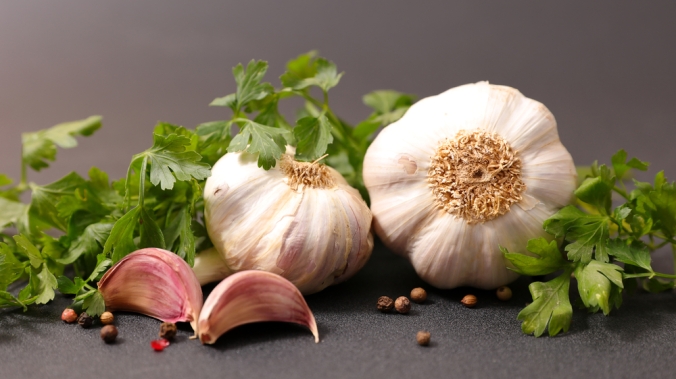 As we head into September we also fall into the change of seasons into Autumn. Whilst most of us just want the summer to continue forever, just as night follows day, the seasons must change.
As we head into September we also fall into the change of seasons into Autumn. Whilst most of us just want the summer to continue forever, just as night follows day, the seasons must change.
Even during ‘normal’ times it is important to start thinking about how you can best protect your immune system for the colder months ahead. And right now, it is even more essential. Eating with the seasons also provides foods that are more nutrient-dense, just as nature intended.
Clinical nutritionist, Suzie Sawyer, shares her five top seasonal foods as we head into Autumn.
Plums
Any darkly coloured fruits or vegetables deliver a wealth of protective antioxidants, and plums are no exception. Unusually for fruit, plums are rich in vitamin E which is a very powerful antioxidant looking after the natural fatty part of our cells. They’re also high in heart-loving potassium and energising iron.
When plums are dried, they become known as prunes, probably best acknowledged for their fibrous content when bowels are sluggish. You can also find them pickled in brine and called umebushi. Plums are especially tasty lightly poached with a little honey and added to oats or other breakfast cereals.
Venison
Venison from deer is actually one of the healthiest red meats available. Deer generally move freely around which means the meat is tender and flavoursome. It is also lower in fat that a skinned breast of chicken and higher in iron than any other red meat. If you can find venison from free-range or wild deer, that’s going to be the healthiest option.
Venison is often thought of as a meat only eaten by the aristocracy because of the sport of hunting deer. However, it’s certainly a food that could feature on the menu right now. It can be prepared and cooked in the same way as beef or steak, simply pan-fried. Venison also makes a tasty curry or casserole.
Mackerel
Mackerel’s main claim to fame is down to the amount of healthy omega-3 fats it delivers. These essential omegas have to be eaten in the diet, as the body can’t make them, and they are very important for heart, eye, skin, hormone and joint health. Oily fish, such as mackerel, is the best source of these fats. There are plant sources of omega-3s, such as flaxseeds, but these are not always as well absorbed by the body.
Mackerel makes a great lunchtime meal with salad, especially when it’s smoked. Although it will contain more salt when prepared in this way, it helps the fact that it doesn’t naturally have a strong flavour. Mackerel is therefore best spiced up a little or paired with a sharp fruity sauce. Try to include it on your menu plan once a week if possible.
Apples
Apples are synonymous with Autumn as they always appear on the Harvest Festival table. However, they make a wonderful snack providing plenty of vitamin C, as well as being the star of any pie or crumble. Apples are also low in both calories and on the glycaemic index, meaning they won’t upset blood sugar levels and are therefore great if you’re watching your weight.
Supermarkets tend to store apples for many months, therefore buying them at farmer’s market or freshly picked is certainly preferable. However, there are plenty to choose from with over 50 different varieties grown in the UK. They’re very protective of the heart due to their potassium content and the presence of the flavonoid quercetin, plus, apples are a great source of fibre. So many reasons to always have one handy as a go-to snack!
Kale
A member of the cabbage family and also known as curly kale or collard, kale has often been hailed as a superfood, alongside Brussels sprouts and broccoli. This is partly because all these vegetables contain a phytonutrient called sulforaphane which is a powerful liver detoxifier.
Kale is a very rich source of the antioxidants, vitamin C and beta carotene. Even better, kale is a great source of the minerals iron, manganese, calcium and potassium which are often deficient in the typical western diet.
What do I do with it, you many ask! Kale can be very lightly boiled or steamed and then stir fried with garlic. It can be grilled with a little salt to make kale chips. It is also great in stir fries or in a delicious green soup with onion, potatoes, garlic and chorizo, if desired.
So, as we head into autumn enjoy these five delicious and super-healthy foods which are in season right now.
FOR MORE GREAT DIET AND LIFESTYLE ADVICE:
Sign up to receive our blog and get a weekly dose of the latest nutrition, health and wellness advice direct to your inbox.
Follow us on Twitter @feelaliveuk for nutrition, lifestyle and well-being tips.
Visit us at www.feelaliveuk.com for the latest offers and exclusive Alive! content.
Follow and Chat with Suzie on Twitter @nutritionsuzie
For everything you need to know about vitamins, minerals and herbs visit our sister site Herbfacts
All images: Shutterstock





























